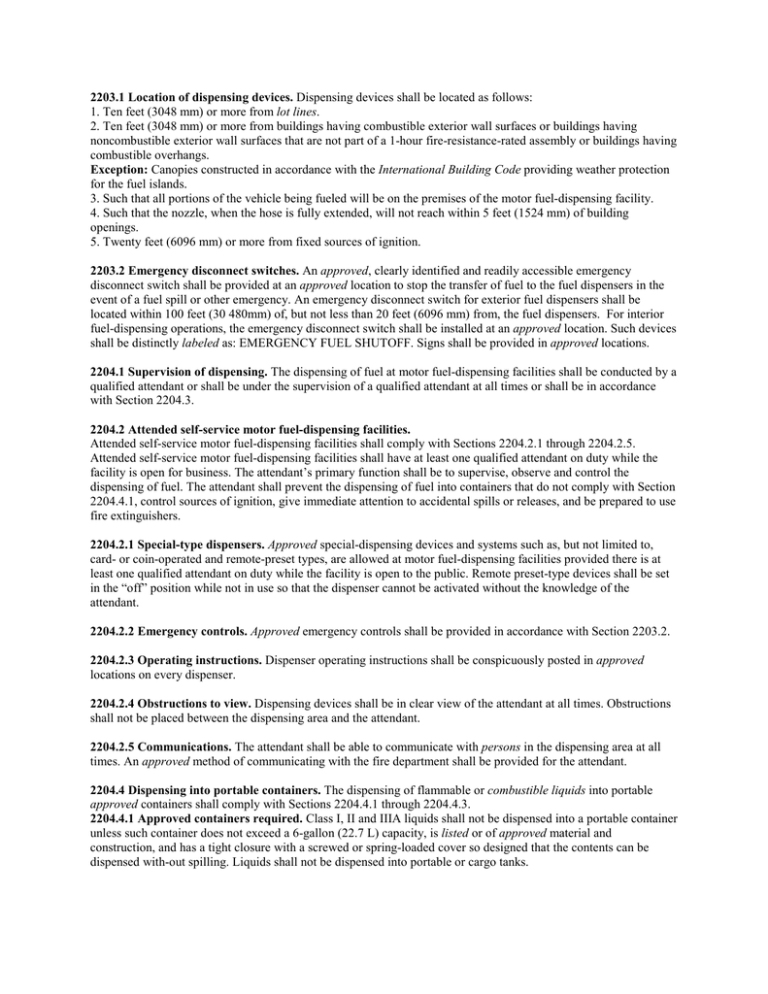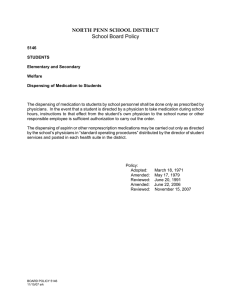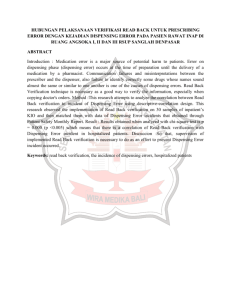2203.1 Location of dispensing devices. Dispensing devices shall be
advertisement

2203.1 Location of dispensing devices. Dispensing devices shall be located as follows: 1. Ten feet (3048 mm) or more from lot lines. 2. Ten feet (3048 mm) or more from buildings having combustible exterior wall surfaces or buildings having noncombustible exterior wall surfaces that are not part of a 1-hour fire-resistance-rated assembly or buildings having combustible overhangs. Exception: Canopies constructed in accordance with the International Building Code providing weather protection for the fuel islands. 3. Such that all portions of the vehicle being fueled will be on the premises of the motor fuel-dispensing facility. 4. Such that the nozzle, when the hose is fully extended, will not reach within 5 feet (1524 mm) of building openings. 5. Twenty feet (6096 mm) or more from fixed sources of ignition. 2203.2 Emergency disconnect switches. An approved, clearly identified and readily accessible emergency disconnect switch shall be provided at an approved location to stop the transfer of fuel to the fuel dispensers in the event of a fuel spill or other emergency. An emergency disconnect switch for exterior fuel dispensers shall be located within 100 feet (30 480mm) of, but not less than 20 feet (6096 mm) from, the fuel dispensers. For interior fuel-dispensing operations, the emergency disconnect switch shall be installed at an approved location. Such devices shall be distinctly labeled as: EMERGENCY FUEL SHUTOFF. Signs shall be provided in approved locations. 2204.1 Supervision of dispensing. The dispensing of fuel at motor fuel-dispensing facilities shall be conducted by a qualified attendant or shall be under the supervision of a qualified attendant at all times or shall be in accordance with Section 2204.3. 2204.2 Attended self-service motor fuel-dispensing facilities. Attended self-service motor fuel-dispensing facilities shall comply with Sections 2204.2.1 through 2204.2.5. Attended self-service motor fuel-dispensing facilities shall have at least one qualified attendant on duty while the facility is open for business. The attendant’s primary function shall be to supervise, observe and control the dispensing of fuel. The attendant shall prevent the dispensing of fuel into containers that do not comply with Section 2204.4.1, control sources of ignition, give immediate attention to accidental spills or releases, and be prepared to use fire extinguishers. 2204.2.1 Special-type dispensers. Approved special-dispensing devices and systems such as, but not limited to, card- or coin-operated and remote-preset types, are allowed at motor fuel-dispensing facilities provided there is at least one qualified attendant on duty while the facility is open to the public. Remote preset-type devices shall be set in the “off” position while not in use so that the dispenser cannot be activated without the knowledge of the attendant. 2204.2.2 Emergency controls. Approved emergency controls shall be provided in accordance with Section 2203.2. 2204.2.3 Operating instructions. Dispenser operating instructions shall be conspicuously posted in approved locations on every dispenser. 2204.2.4 Obstructions to view. Dispensing devices shall be in clear view of the attendant at all times. Obstructions shall not be placed between the dispensing area and the attendant. 2204.2.5 Communications. The attendant shall be able to communicate with persons in the dispensing area at all times. An approved method of communicating with the fire department shall be provided for the attendant. 2204.4 Dispensing into portable containers. The dispensing of flammable or combustible liquids into portable approved containers shall comply with Sections 2204.4.1 through 2204.4.3. 2204.4.1 Approved containers required. Class I, II and IIIA liquids shall not be dispensed into a portable container unless such container does not exceed a 6-gallon (22.7 L) capacity, is listed or of approved material and construction, and has a tight closure with a screwed or spring-loaded cover so designed that the contents can be dispensed with-out spilling. Liquids shall not be dispensed into portable or cargo tanks. 2204.4.2 Nozzle operation. A hose nozzle valve used for dispensing Class I liquids into a portable container shall be in compliance with Section 2206.7.6 and be manually held open during the dispensing operation. 2204.4.3 Location of containers being filled. Portable containers shall not be filled while located inside the trunk, passenger compartment or truck bed of a vehicle. 2205.2 Equipment maintenance and inspection. Motor fuel-dispensing facility equipment shall be maintained in proper working order at all times in accordance with Sections 2205.2.1 through 2205.2.5. 2205.2.1 Inspections. Flammable and combustible liquid fuel-dispensing and containment equipment shall be periodically inspected where required by the fire code official to verify that it is in proper working order and not subject to leakage. 2205.2.2 Repairs and service. The fire code official is authorized to require damaged or unsafe containment and dispensing equipment to be repaired or serviced in an approved manner including, but not limited to, equipment that shows signs of physical damage, internal and external corrosion, leakage, brittleness, aging or undue wear and tear. 2205.2.3 Dispensing devices. Where maintenance to Class I liquid dispensing devices becomes necessary and such maintenance could allow the accidental release or ignition of liquid, the following precautions shall be taken before such maintenance is begun: 1. Only persons knowledgeable in performing the required maintenance shall perform the work. 2. Electrical power to the dispensing device and pump serving the dispenser shall be shut off at the main electrical disconnect panel. 3. The emergency shutoff valve at the dispenser, where installed, shall be closed. 4. Vehicle traffic and unauthorized persons shall be prevented from coming within 12 feet (3658 mm) of the dispensing device. 2205.2.4 Emergency shutoff valves. Automatic emergency shutoff valves required by Section 2206.7.4 shall be checked not less than once per year by manually tripping the hold-open linkage. 2205.2.5 Leak detectors. Leak detection devices required by Section 2206.7.7.1 shall be checked and tested at least annually in accordance with the manufacturer’s specifications to ensure proper installation and operation. 2205.3 Spill control. Provisions shall be made to prevent liquids spilled during dispensing operations from flowing into buildings. Acceptable methods include, but shall not be limited to, grading driveways, raising doorsills or other approved means. 2205.4 Sources of ignition. Smoking and open flames shall be prohibited in areas where fuel is dispensed. The engines of vehicles being fueled shall be shut off during fueling. Electrical equipment shall be in accordance with NFPA 70. 2205.5 Fire extinguishers. Approved portable fire extinguishers complying with Section 906 with a minimum rating of 2-A:20-B:C shall be provided and located such that an extinguisher is not more than 75 feet (22 860 mm) from pumps, dispensers or storage tank fill-pipe openings. 2205.6 Warning signs. Warning signs shall be conspicuously posted within sight of each dispenser in the fueldispensing area and shall state the following: 1. No smoking. 2. Shut off motor. 3. Discharge your static electricity before fueling by touching a metal surface away from the nozzle. 4. To prevent static charge, do not reenter your vehicle\while gasoline is pumping. 5. If a fire starts, do not remove nozzle—back away immediately. 6. It is unlawful and dangerous to dispense gasoline into unapproved containers. 7. No filling of portable containers in or on a motor vehicle. Place container on ground before filling. 2205.7 Control of brush and debris. Fenced and diked areas surrounding above-ground tanks shall be kept free from vege-tation, debris and other material that is not necessary to the proper operation of the tank and piping system. Weeds, grass, brush, trash and other combustible materials shall be kept not less than 10 feet (3048 mm) from fuel-handling equipment.

